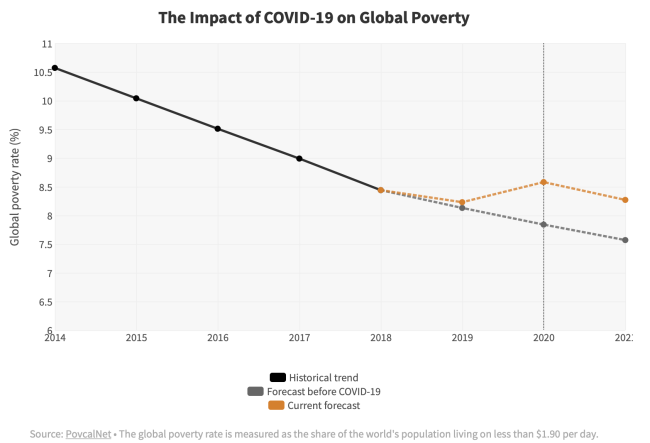The richest countries have already seen the worst of COVID-19 and as the virus continues to spread, developing countries are getting hit hard. Unlike the wealthiest of nations, developing countries do not have the resources to combat the virus, and the virus threatens not only people’s health but their social and economic well-being.
According to the United Nations Development Programme (UNDP), “the COVID-19 outbreak threatens to disproportionately devastate the economies of already impoverished countries as they gear up to tackle a health crisis with extremely limited resources.”
Some developing countries struggle under weak or repressive governments and poor healthcare systems and are finding themselves at the bottom. Developing countries in Latin America and Africa are fighting to compete for scarce medical equipment but are coming up short as the United States or European nations are “outspending” them.
Economic instability
In developing countries communities often do not have the economic stability to conduct lockdowns and enact social distancing. The loss of income could have severe consequences for societies, including in areas such as education, poverty and food security.
Many times, developing countries are not sufficiently financially stable to handle the negative effects of COVID-19. Income losses are expected to exceed $220 billion in developing countries and the UNDP predicts nearly half of all jobs in Africa could be lost.
Many poor families in developing countries are required to work to make ends need. Social distancing prevents the poor from working and generating an income.
According to Foreign Policy journalist Ahmed Mushfiq Mobarak and Zachary Barnett-Howell they wrote “Workers in these countries are more likely to be employed doing hands-on work that cannot be conducted while social distancing. They are also likely to be in the informal sector and rely on a daily cash wage—without access to a social safety net. In the short term, social distancing prevents them from working and generating an income; in the long term, this can lead to hunger, malnutrition, other non-coronavirus-related health problems, and death.”
Due to COVID-19 and lockdowns, more than 15 million jobs could be lost in India’s export sector due to order cancellations. The engineering exports are losing to China and is looking at an estimated 50,000-75,000 jobs lost. The textiles and garments sector, which employees millions of people and young women, is losing 32 million jobs.
Impact on global poverty
Experts believe that due to COVID-19 49 million people will be pushed into extreme poverty.
Those already on the poverty line exist in developing countries. The World Bank estimates that athough Sub-Saharan Africa has had few cases, they suggest that the area will be hit hardest in terms of increased extreme poverty.

Education
Many schools around the world are closing for the rest of the academic year and moving online. However, for developing countries, many do not have the ability to conduct virtual classes. African countries rank in the bottom third of countries in terms of internet availability and affordability.
Malnutrition is expected as 368.5 million children across 143 countries who normally rely on school meals for a reliable source of daily nutrition must now look to other sources.
These circumstances leave children with no access to education and one less meal throughout the day.
Food insecurity
The World Bank, along with other organizations, are working collectively to keep food trade flowing between developing countries. The World Bank is building on existing projects and deploying short and long-term financing to different areas of the world.
In Haiti, the Resilient Productive Landscape project is mobilizing emergency funding to benefit 21,500 family farmers to safeguard production for the next two cropping seasons.
The World Bank is working with countries to help them adopt appropriate food policy responses:
- treating food as an ‘essential service’ to keep food moving and opening special procedures (‘green channels’) for food, trade and agricultural inputs to ensure supply chains are kept open and functional.
- incorporating necessary health and safety measures along segments of the food supply chain.
- supporting the most vulnerable populations via safety net programs, complemented by food distributions in areas where supply chains are severely disrupted.


